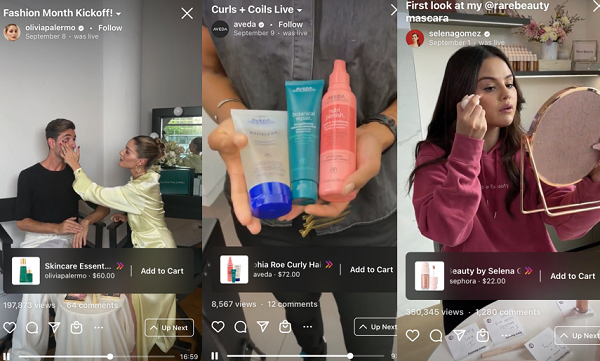It seems that live shopping, which has been huge in Asian markets, and had represented a key hope for revenue growth for western social apps, is still not catching on the way many had hoped.
Today, TechCrunch has reported that Meta is abandoning its live shopping push on Instagram, after pulling out of live shopping on Facebook in August last year.
As per TechCrunch:
“Starting on March 16, 2023, Instagram users will no longer be able to tag products while livestreaming – a capability that has been broadly available to U.S. businesses and creators since 2020.”

As noted, live shopping has been huge in China, bringing in close to $400 billion in the region in 2022 alone, which is equivalent to almost half of all eCommerce spending in the US last year. Live-stream commerce has also proven increasingly popular among younger audiences, with users aged 27 and under seeing the fastest adoption of live-stream spending.
That’s been a key element in boosting Douyin, the Chinese version of TikTok, which generates the majority of its revenue from in-app shopping. Sales generated via Douyin live broadcasts rose 7x year-over-year in 2021, and on the back of the pandemic-led eCommerce boom, western social platforms had been looking to jump on board, and usher in a new generation of live, in-stream shopping across their apps.
Pinterest, YouTube, Instagram – virtually every app has tried its hand at live-stream shopping, but none of them have caught on in the same way as their Chinese counterparts.
And now, as Meta looks to cut costs, and streamline its operations, it’s moving on completely from the process.
In terms of Meta’s overall business plan, that won’t have a huge impact, as live shopping was never a major element of its service either way. But again, for TikTok, which has generated most of its money from shopping in other regions, it could be problematic, especially if it can’t provide alternate means for creators to make money in the app.
TikTok is working on this, developing a new Creator Fund, and a new paywall option for video clips. But it’s a challenge, and it’ll require a significant rethink of TikTok’s growth models if live shopping doesn’t catch on in the west.
Which seems increasingly unlikely – while on Instagram, it also lessens the emphasis on shopping overall, which had, at one time, been a key push.



